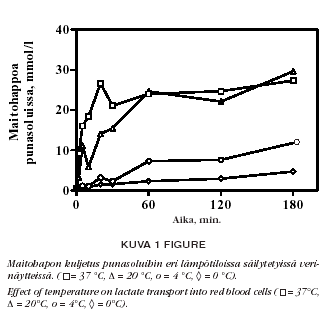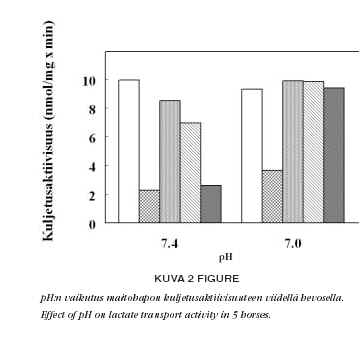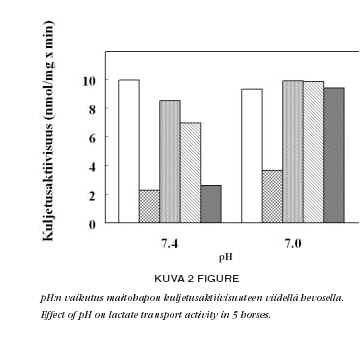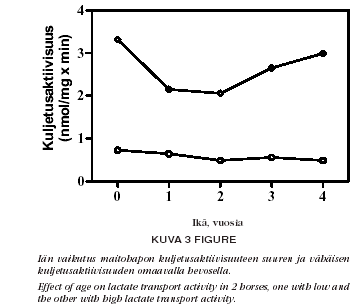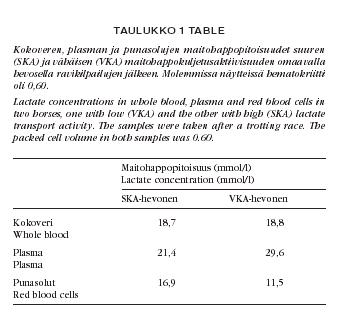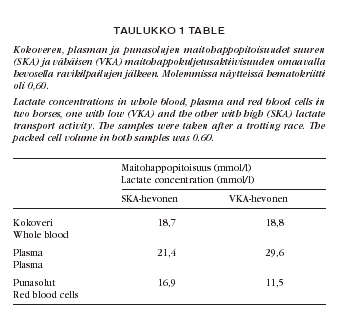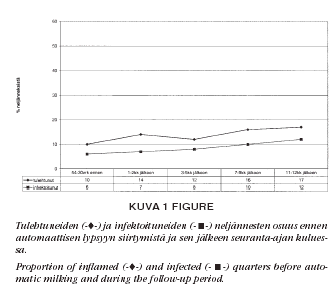
A growing number of Finnish dairy farms have installed an automatic milking system (AMS). Differences between AMS and traditional milking systems may affect udder health. In AMS, cows are milked nearly three times a day at irregular intervals. Preparation of the udder and control of milk quality are done by the automatic milking unit. Results from research on udder health in AMS are contradictory. In this study, we observed two Finnish dairy farms that started milking automatically after having a tie-stall barn. Teat condition, number of infl ammations and infections per cow and quarter were followed-up during fi ve visits during 14 months. Condition of teat-ends deteriorated, and the number of infl ammations and infections grew. Udder health remained at a good level during the follow-up period. The distribution of bacteria isolated from infected quarters differed from the usual distribution in Finnish dairy farms. In this study, the proportion of environmental bacteria was higher. The factors that affected udder health in this study are diffi cult to specify. Frequent milking may affect teat-ends negatively. Changes in environment, for example the change from tie-stall barn to loose housing, may cause stress, which contribute to the increased frequency of infl ammations and infections. The follow-up period was too short to determine the level udder health would have stabilized at. The number of studied farms was also very small, so results must be interpreted only as suggestive. We conclude that AMS cannot be expected to automatically improve udder health. Much attention should be paid on udder health, and new means of monitoring udder health should be found in AMS farms. More research is needed with a longer follow-up period and more data.

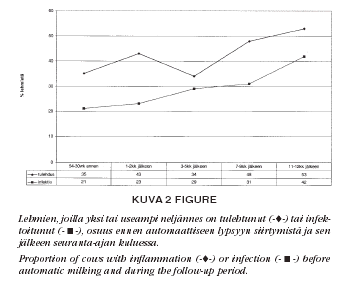
During intense exercise, when lactate production in muscles is high and buffer capacity is exceeded, the transport of lactate from muscles into blood enables the muscles to continue anaerobic activity. Lactate is transported from plasma to other tissues to be metabolized or for storage in the red blood cells. The most important lactate transporter in cell membranes is the MCT transporter, which cotransports a lactate-anion and a proton. During exercise, red blood cells in horses act as a lactate sink and the horses show wide interindividual variation in lactate transport activity into red blood cells. We discuss differences occurring in plasma and whole blood lactate concentrations and further show how lactate transport activity, storage temperature of the blood sample, blood pH, and the training state of the horse infl uence the measured values.
